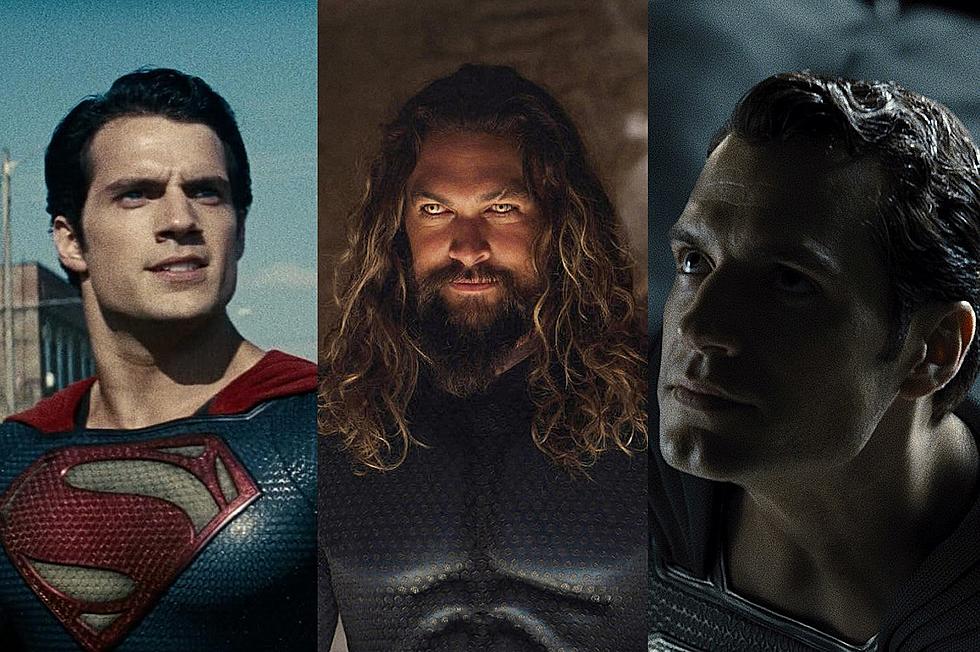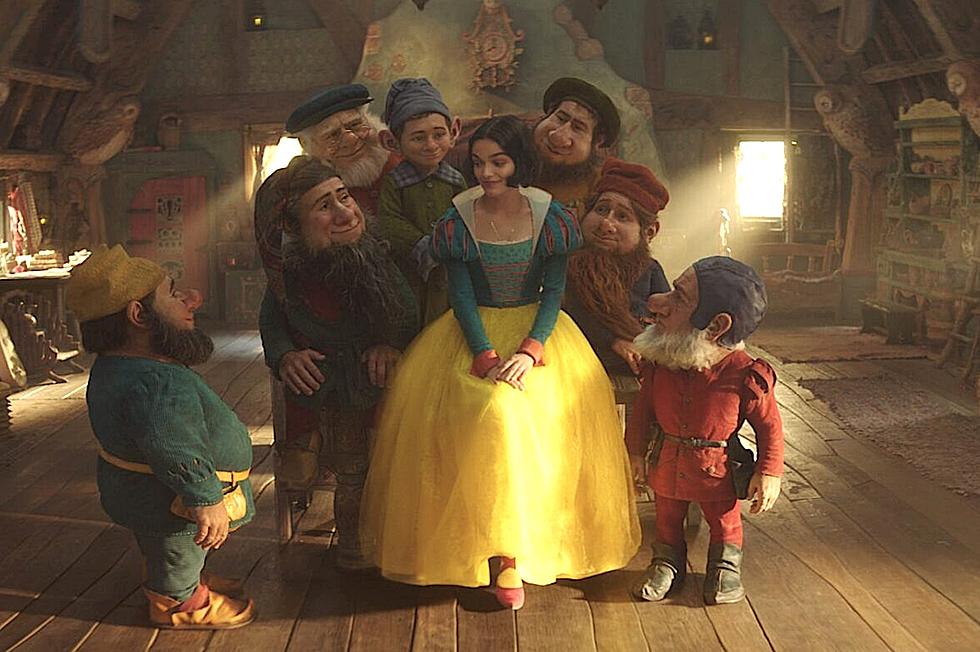
Wonder Woman Isn’t Enough to Save ‘Batman vs. Superman’s Women From Injustice
Even before the early reviews began rolling in, the trailers solidified Gal Gadot’s Wonder Woman as the most exciting attraction in Batman v Superman: Dawn of Justice. Audiences agreed, as Wonder Woman — whose name isn’t even in the title of the film — ranked highest in a recent poll that asked fans which character they were most eager to see in Zack Snyder’s superhero epic. As predicted, Gadot’s debut is definitely the best thing in Batman v Superman, and although her part only makes up about seven minutes of the film’s 150-minute runtime, those few minutes are riveting — but not enough to justify Snyder’s unfortunate treatment of the remaining female characters.
The excitement over seeing Wonder Woman in Batman v Superman is owed both to Gadot’s portrayal of the character and the long, long wait fans have had to endure for the iconic superhero to finally make her live-action, big screen debut. Gadot is equal parts charismatic, alluring and badass, and — perhaps most importantly — she makes it all seem so effortless, standing in stark contrast to the aggressive, strained theatrics of her male counterparts. Unlike several of the film’s other cameos, Gadot’s involvement doesn’t feel blatantly shoehorned in to reverse-engineer a franchise, and it’s one of the only things Snyder got right in an otherwise bloated and tediously dour film.
Batman v Superman comes alive every time Gadot is on screen, whether she’s the enigmatic Diana Prince or her powerful warrior alter ego, and it’s more than enough to cement enthusiasm for her forthcoming solo outing. But does seven great minutes of Wonder Woman make up for the near-criminal mishandling of every other woman on screen? In brief: No.
If I had to rank the women in Batman v Superman from strongest to most pointless, it would go something like this: Wonder Woman, Lois Lane, nameless Daily Planet employee (Jenny, according to IMDb), Senator Finch, Martha Kent, Mercy Graves, and Martha Wayne.
Lois Lane is given far more screen time than Wonder Woman, and if it weren’t for the consistently great Amy Adams, her presence would feel like a bit of mechanical convenience. She essentially appears only to progress Superman’s narrative, to make us empathize with Clark Kent and to be repeatedly endangered so that she can be rescued. Lois is not so much a plot device as she is a character accessory, and though she takes investigative initiative with her usual amount of pluck, she exists only in service of Superman. Rather than subvert an outdated comic book narrative, Snyder and co-writers Chris Terrio (Argo) and David S. Goyer reinforce the notion that Superman makes Lois Lane interesting. Without Superman, she doesn’t exist.
Similar criticism can be applied to Martha Wayne, played in the umpteenth retelling of the death of Bruce Wayne’s parents by The Walking Dead’s Lauren Cohan, who is given absolutely no dialogue. She appears in the opening credits montage only to immediately die. At least her husband (Jeffrey Dean Morgan) is given one line before he expires, and at least it’s an acknowledgement of Martha. To be fair, Snyder’s treatment of Bruce’s parents is a cheap and lazy ploy to elicit instant empathy for Ben Affleck’s Batman. It’s the most basic and oft-revisited part of Batman’s origin story, a scene that’s been played out so many times, in so many TV shows and movies that it’s become a satire of itself. The prolific death of Thomas and Martha Wayne has now reached near-meta-levels, offering unintentional commentary on the redundancy of superhero franchises.
The death of the Waynes in Batman v Superman is clearly a lame plot device, and both characters have almost always existed to make us care about Batman — but taken in with Snyder’s treatment of the rest of the women in the film, Martha’s total absence of dialogue becomes distinctly unfortunate.
Given slightly more dialogue (one or two lines), Mercy Graves is no less disappointing. Lex Luthor’s assistant is played by Tao Okamoto, who made for a fiercely great addition to Hannibal Season 3, but whose role in Batman v Superman is reduced to a collection of high heels, dramatic walks down hallways, raised eyebrows and reaction shots. Oh, and lest we forget her most crucial moment: dying in an explosion Luthor rigs to go off during a Senate committee hearing, effectively framing Superman. Since she has minimal dialogue and no character development whatsoever, it’s impossible to know if Mercy was aware of Lex’s sinister plan — it certainly would have made her more interesting, but perhaps Snyder just couldn’t figure out how to fit that in to a 150-minute film that’s already overstuffed with more important things, like awkwardly forced cameos from Aquaman and The Flash, and Batman’s CrossFit montage.
Holly Hunter is given a more proactive and talkative role as June Finch, a Senator with a worldview so nuanced that it has to be a work of fiction. Even still, she’s there mostly to trade quips with Jesse Eisenberg’s clownish Lex Luthor, and ultimately to serve as his tragic pawn.
But the most egregious mishandling of a woman in Batman v Superman is Martha Kent. Diane Lane returns to reprise her role, merely ticking off the boxes on a list of reductive stereotypes. She first appears when a gloomy Clark seeks her maternal advice during a crisis of conscience, soothing his wounded ego and reinforcing his special, chosen existence. From there, Lane’s role is diminished further to a cutaway scene at the diner where she works before she’s kidnapped and held hostage by Luthor’s violent Russian henchman in an effort to convince Superman to kill Batman.
Martha spends the rest of the climax tied to a chair, while Luthor shows Superman a series of Polaroid snapshots featuring his distressed mother, bound and gagged with tears streaming down her face. It’s the stuff of snuff films, and it’s a truly heinous reduction of a character who has already been reduced to a male-oriented plot device. But it also highlights a tired damsel-in-distress trope, one that is fully exhausted between the combined screen time of Martha Kent and Lois Lane. Adding further unpleasantry is the symbolism of the abused Martha, silenced and tortured by one man for the narrative progression of another.
After her inevitable rescue, Martha reappears in Clark’s old bedroom during the film’s maudlin denouement to deliver an engagement ring Clark intended to give to Lois. It seems appropriate that this scene would take place in the room of an adolescent male, the place where a boy nurtures his myopic and narcissistic fantasies about women — ignorant though those juvenile imaginings may be, it’s exactly the sort of reductive mindset that fosters the mistreatment of characters like Martha and Lois, whose only shared scene unsurprisingly revolves around a man who, even in death, drives their entire fictional existence.
Our seven minutes in Wonder Woman heaven may have been glorious, what with the Amazonian sword-and-shield ferocity that renders her macho male counterparts so obviously useless that a mic drop would feel a bit excessive — but the undeniable excitement of watching Wonder Woman in action isn’t enough to excuse or even distract from the treatment of her female co-stars. With everyone so preoccupied by the definition of justice, no one bothered to make sure these characters were being done any at all.
Where is their value and depth? Maybe Zack Snyder had to reserve it for his three-hour, R-rated “Ultimate Edition.”
More From ScreenCrush









